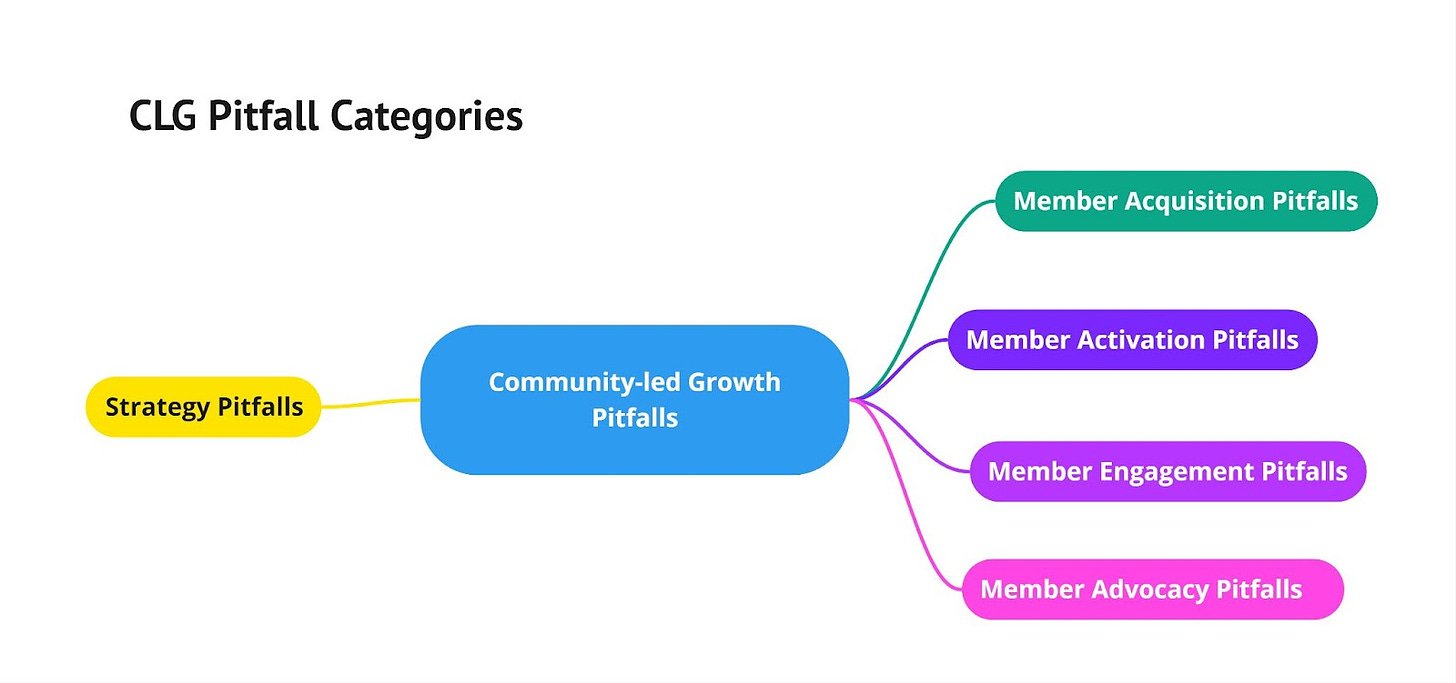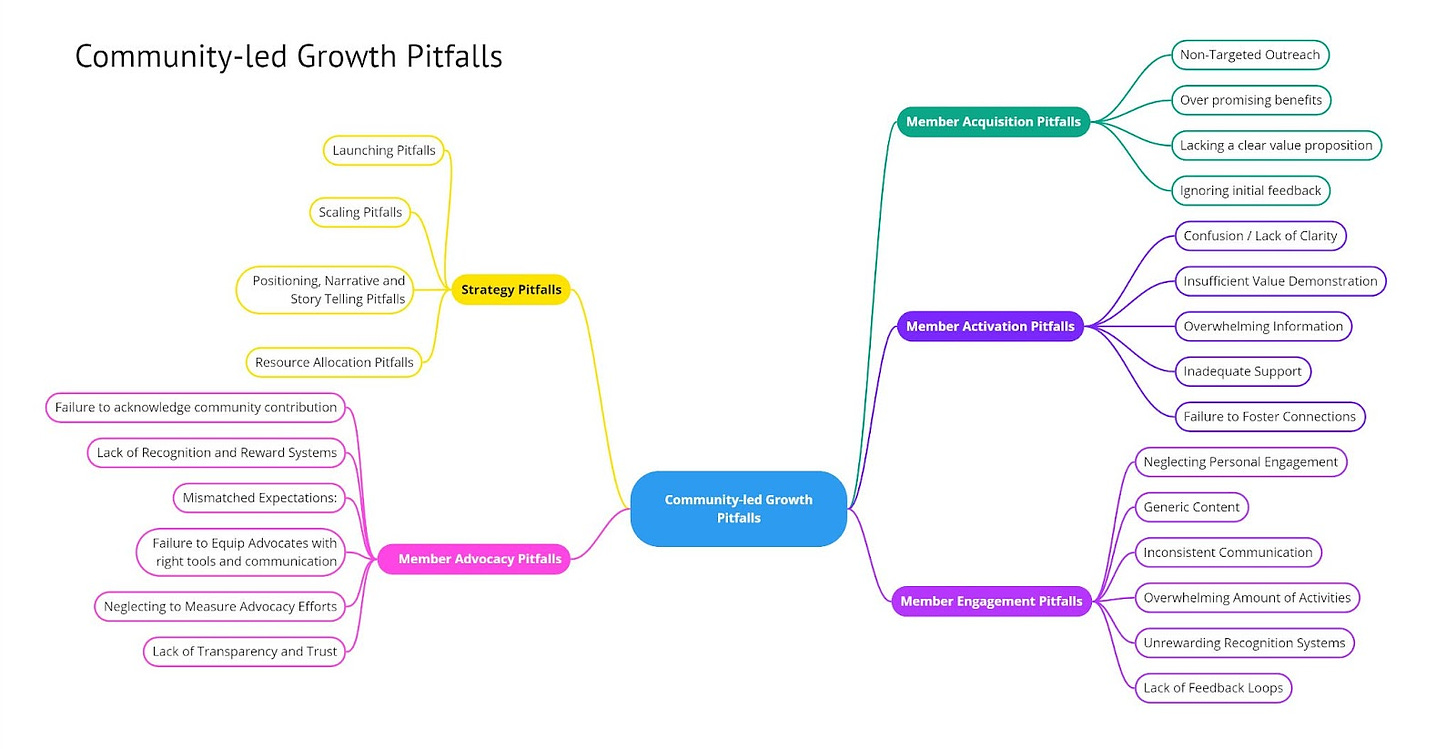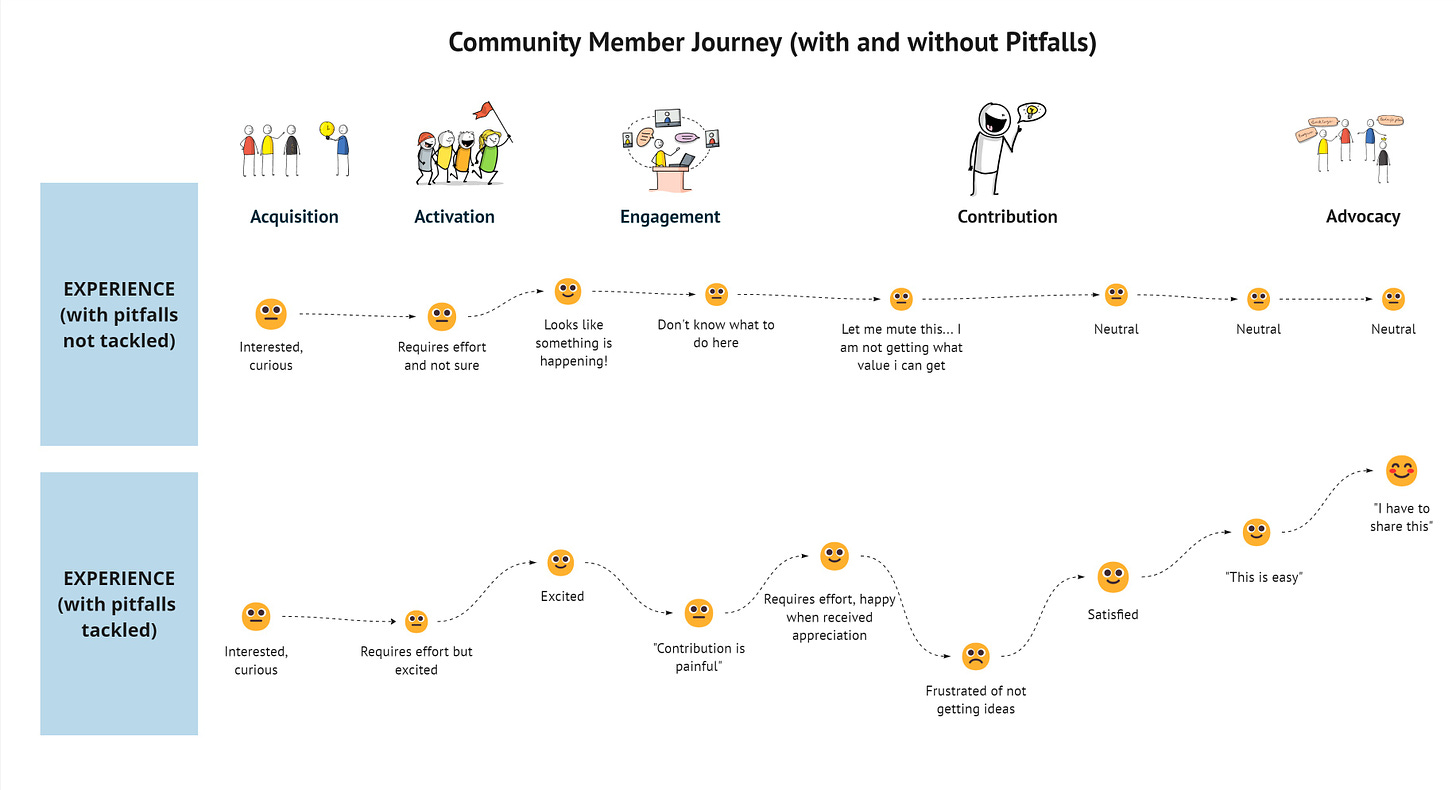"70 percent of online communities are destined to fail - Gartner”. How is this possible?
Discover why Gartner says 70% of online communities are set to fail. Learn about the usual mistakes in managing a community and how wrong moves can lead to failure.
Hey, Ayush here! Welcome to this week’s ✨ free edition ✨ of Startup GTM Newsletter. Daily, I work with founders and understand their questions about GTM, growth, people-first strategies, communities and anything else about building a startup.
If you’re not a subscriber, here’s what you missed earlier:
How Polygon scaled through community-led growth: An Exclusive Interview with Astha Gupta
Building B2B growth through trust-context and community-led approach
Subscribe to get access to these posts, and every post. Follow me on Linkedin and Twitter. Want to discuss about your GTM? Setup a meeting on this link.
“According to Gartner, 70 percent of online communities are destined to fail.”...Few of the issues they have highlighted in the report:
A Peer-to-Peer Community on an Organization's Proprietary Web Is Not an Intuitive Destination
Communities Are Frequently Disconnected From Popular Consumer Social Networks
SLAs for SaaS communities Have Not Been Standardized
KPIs of Communities Directly Indicating Value-Adds to the Business Have Not Been Standardized
Executive Commitment Is Needed to Build a Successful Community While Costs Go Through a Temporary Period of Increase
Let’s recap a bit about Community-led Growth…
“Community-led growth aligns on deep human characteristics to socialise and be a part of a circle which can help them move-up in their career. That is the reason platforms like Linkedin, Twitter have gained significant growth due to member’s innate desire to be in the circle of similar or above stature members.”CLG approach positions the community of potential customers (users / influencers / buyers at the centre, engaging and building trust with them, while valuing their input in shaping the brand's direction. A robust community can significantly accelerate brand growth by fostering trust, enabling authentic engagement, and driving word-of-mouth referrals.
A strong community cultivates a sense of belonging among members, enhancing community advocacy and brand acceptability.
Community-led growth enables a two-way dialogue, where inputs, concerns, fears, desires, needs, and feedback from the community acts as the strategic inputs for brand positioning, messaging, narrative building, story telling, and product roadmaps.
This strategy transforms members into aware and warm prospects, organically expanding the brand's reach.
It underscores the shift from traditional marketing to a more inclusive, community-centric approach, showcasing its long-term value in brand sustenance and expansion.
Based on my analysis and experience of last 7 years in building in Community-led Growth, i am sharing with you the potential pitfalls that normally arises and are overlooked while strategizing and executing, and that leads to failure of communities:
Top 6 Potential Pitfalls
Over Promotion
Focusing too much on self-promotion can come across as insincere, detracting from genuine community engagement.
Ignoring Negative Feedback
Disregarding or dismissing negative feedback alienates community members and misses out on opportunities for improvement.
Lack of Consistency
Inconsistent engagement leads to confusion and diminished trust in the community.
Failing to Adapt as per changing expectations
The evolving nature of communities requires brands to be agile and adaptable in their strategies.
Underestimating the investment
Building a strong community requires time, effort, and resources.
Blindly copying the initiatives
Just copy-pastying the successful initiatives from other communities without strategising them as per the member persona and community stage.
Categories of Pitfalls that lead to Community failures…
Strategy Pitfalls
Overarching strategic blunders that can occur when planning and executing community-led growth initiatives. This could range from a lack of clear objectives, insufficient resource allocation, to misalignment between community strategies and broader organizational goals.
Launching Strategy Pitfalls
Scaling Strategy Pitfalls
Positioning, Narrative and Story Telling Pitfalls
Resource Allocation Pitfalls
Blindly copying the initiatives
Member Acquisition Pitfall
Acquiring the right members is the foundation of a community's success. Pitfalls here include not having a clear target member persona, using ineffective outreach methods, or having an ambiguous value proposition. These missteps can lead to slow community growth, low-quality engagements, or attracting members who are not the right fit for the community, thus diluting the community's focus and value.
Non-Targeted Outreach
Over promising benefits
Lacking a clear value proposition
Ignoring initial feedback
Member Activation/Onboarding Pitfalls
Effective onboarding is crucial for member retention and engagement. Pitfalls at this stage often involve a lack of clarity, insufficient value demonstration, or overwhelming new members with too much information. These issues can lead to a disoriented or disengaged member base, with many potentially active members falling through the cracks due to poor onboarding experiences.
Confusion / Lack of Clarity
Insufficient Value Demonstration
Overwhelming Information
Inadequate Support
Failure to Foster Connections between new members and existing group members
Member Engagement Pitfalls
Keeping members engaged is critical for sustaining a vibrant community. Common pitfalls include a lack of personalized engagements, inconsistent communication, or unrewarding recognition systems. When members don’t find the interaction meaningful or beneficial, they tend to disengage, leading to a decline in community activity and growth.
Neglecting Personal Engagement
Generic Content
Inconsistent Communication
Overwhelming Amount of Activities
Unrewarding Recognition Systems
Lack of Feedback Loops
Member Advocacy Pitfalls
Encouraging members to advocate for the community can significantly enhance its growth and reputation. However, pitfalls like a lack of recognition for advocacy efforts, failing to equip advocates with the right tools, or not measuring advocacy effectiveness can hinder member advocacy. When members don’t feel supported or recognized in their advocacy efforts, they are less likely to promote the community, thereby slowing down community growth and external recognition.
Failure to acknowledge community contribution
Lack of Recognition and Reward Systems
Mismatched Expectations:
Failure to Equip Advocates with right tools and communication
Neglecting to Measure Advocacy Efforts
Lack of Transparency and Trust
I want to add the detailed explanation of each pitfall type along with its example and consequences. It would be too long to read, but i would publish another newsletter on the same, if you VOTE below…
Ready to supercharge your startup's go-to-market strategy? Subscribe to our newsletter for exclusive insights, tips, and expert advice. 2000+ Global Founders, Growth Hackers and Marketing Professionals are already reading my newsletter on "StartupGTM" monthly.
Plus, schedule a 1:1 GTM brainstorming meeting with Ayush through Calendly link!









